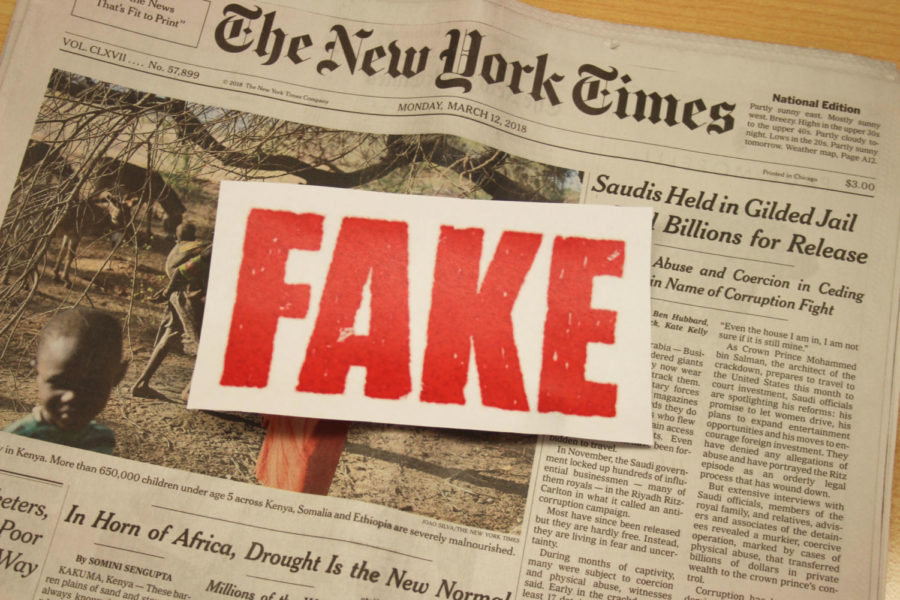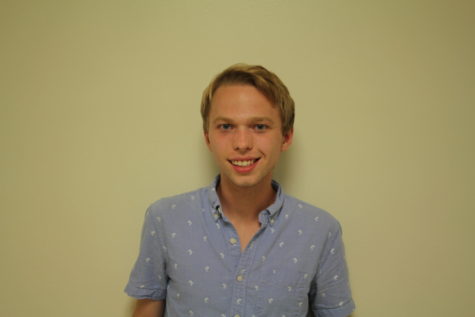Media Mayhem: How a church retreat reminded me of the value of points of view
March 12, 2018
Despite what some may claim, teenagers are aware of the world around them. Some are more aware of world than others, but high school students do consume news—but teenagers often consume the news in forms different than people have in the past: mainly, online.
I read the news like some adults do, in print, but I am the minority. While teenagers aren’t drifting towards the newspaper, they are still reading news in some way or form. But that does beg the question, “Are the places they are getting their knowledge credible?” In this environment, that is of the utmost importance not just for high schoolers but for adults, too.
This weekend, myself and many other teenagers talked about this topic in a workshop I led at a church-sponsored retreat I attended with my youth group.
I’m a Unitarian Universalist, which in essence is a religion in which a person decides their spiritual beliefs for themselves. Church ministers help you to do that by providing different spiritual points of view. Similarly, when it comes to news, isn’t that how you should decide your political views, too?
Unfortunately, not many people do this, largely because it takes so much time to get views from an array of ideological sources. In the workshop, we tried to highlight why that kind of reliance is a bad, bad idea.
I organized this workshop on fake news and media bias with a friend from my youth group and—as we expected—many teens have opinions on the state of the news media.
But when it comes to news literacy and the way in which stories about the same topic can be so drastically different, there was less knowledge on how that happens and how to pick that out.
We entered wanting to discuss media literacy and how the sources of our news impacts how we see the world around us, and we had a lot of ways we started this conversation.
Never—and I repeat, never—have I fabricated a news story, but as a part of this workshop, I participated in the creation of some “fake news,” in the original definition. While being adapted to meaning any coverage someone disagrees with, our fake news was literally fake.
The other co-leader and I sat down and created a set of shared facts revolving around a certain incident and we wrote two articles based on the same situation. But we intended on having out stories creating two totally different impression of the story, based largely on the facts we choose to include and the facts we didn’t. That is a lesson for we journalists, too. Even if a story is 100 percent factually correct, the interpretation it gives off can be wrong.
I can’t speak to the experience of everyone who was involved in the workshop, but for me it felt really good to hear other points of view when it comes to how the media works. Even though I think and write about media, it is arrogant to assume that my opinions are by default obviously the best, because they are not.
In a sense, leading this workshop reminded me of the need for perspectives.
I think it is essential for all of us—for teachers, for baristas, for accountants, for chiefs and, believe it or not, journalists—to think and assess the credibility of the outlets we receive our news from. Even if the information is not necessarily false, the way they present their news can give you a different perspective on the world than someone receiving their news elsewhere.
To truly understand the world, you have to talk to people who understand things differently. The same goes for a person’s sources of news. Read the New York Times and supplement that with Wall Street Journal. Read The Chicago Tribune, and get the Sun-Times, too.
We all need to look to different sources for different points of view: in print, or on TV, or on the radio, or online. Balance is everything—especially in news consumption.



















![Movie poster for '[Rec]" (2007).](https://www.lionnewspaper.com/wp-content/uploads/2023/04/rec-640x900.jpg)



